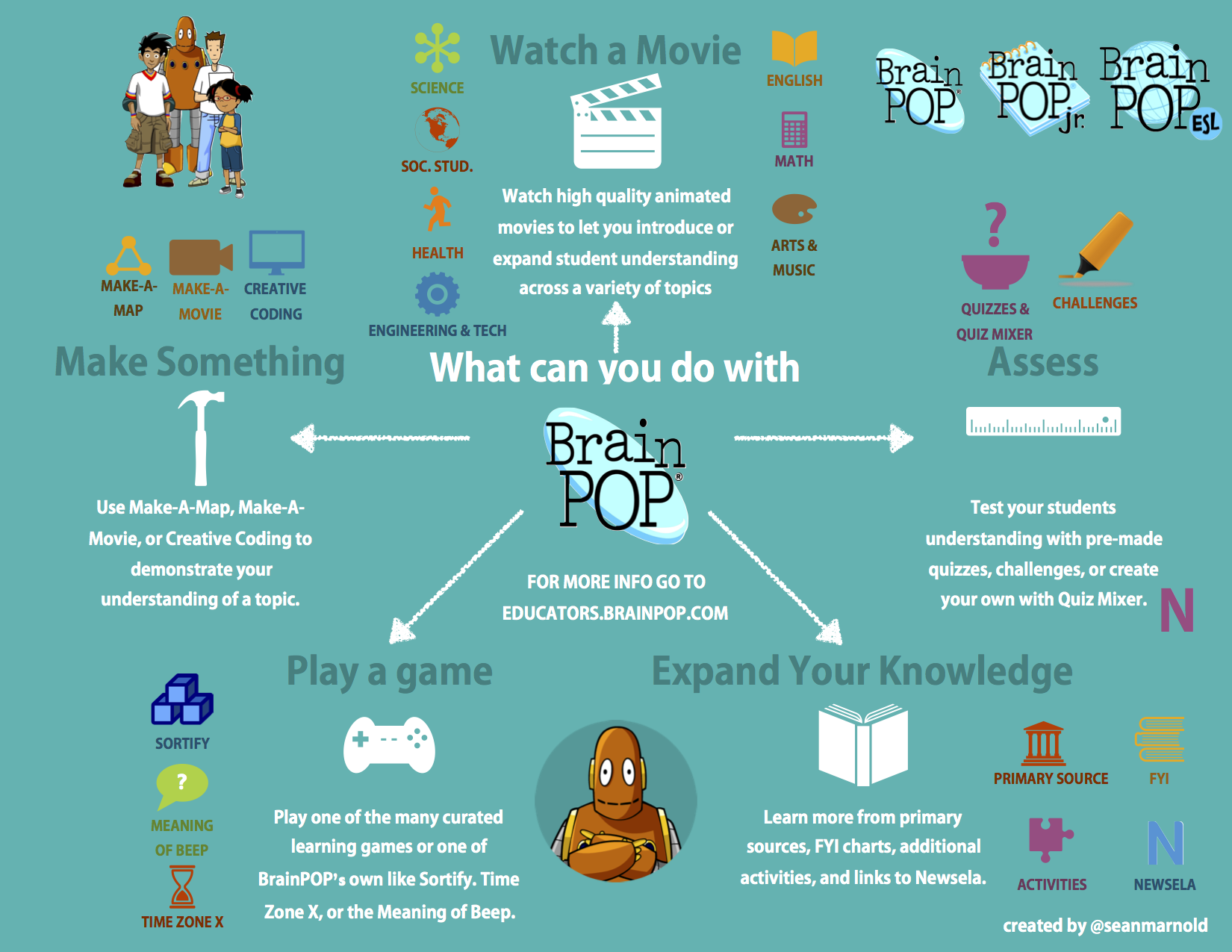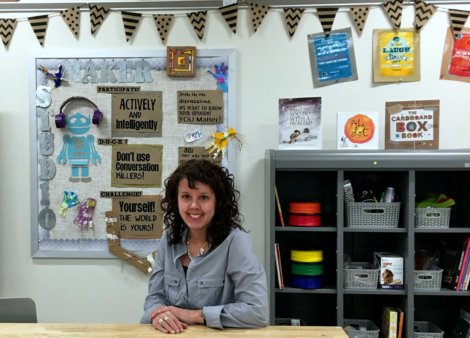
Get in the Game With CBE Sean Arnold
Posted by cemignano on
Earlier this month we introduced you to September’s CBE of the Month Sean Arnold as he shared his experience as a Certified BrainPOP Educator. We’re back with more details about Sean’s love of games and his approach to using educational games with students.
Personal Gaming History
I’ve always been a deeply competitive lover of games. It may have started with soccer and Candyland, but, when we got an Atari, I began to play Galaga, Pitfall, and the infamous E.T. game I owned. What would follow is a childhood love affair with games as I progressed through the original Madden football and Mario Bros. to DOOM and Final Fantasy. Throughout that time I was a pretty good student. I should instead say I got good grades since sometimes I was bored and wasn’t always a good learner. I was focused though when the learning came through the tutelage of Carmen Sandiego or Reader Rabbit. I, like many students before and after, loved learning through games.
Why We Play Games
This is all relevant because now as a teacher, I find play to be crucial in engaging the most reluctant learners. Working in New York City’s District 75, I encounter challenges due to the extreme emotional and cognitive challenges of my students. For that reason, my students don’t learn well via traditional teaching methods. That seems to hold true for most modern students though. I have learned that what often works best for the struggling students also works well with everyone. So I turned to games that I knew to be engaging and memorable. We can all remember rushing home from school to play. What if we could get students to rush into school to play?
Despite claims that video games will lead to hyperactivity and poor achievement, studies actually show the opposite to be true. Here are some stats.
- Games improve learning 23% over traditional teaching.
- Games are better when played with others.
- Games actually promote learning and discourage negative behaviors.
- Games are powerful for overcoming bias and cognitive dissonance.
That last one is especially important in an era of ‘fake news’, online trolls, and flat-earth theorists. Games change hearts and minds where information alone cannot.
So in my classes we’ve played analog games like numerical Twister and digital games like DragonBox. And those are just for math class. Even if you are a teacher who doesn’t enjoy digital games, you can understand that students learn in different ways. Digital games are multi-modal meaning that they are visual, auditory, linguistic, and kinesthetic. Students are learning by seeing, hearing, reading, and physically engaging.
BrainPOP Games
In case you didn’t know, BrainPOP isn’t just movies. The videos are awesome for making content accessible, but their games are great for digging deeper and enhancing understanding of a topic. They will help you GameUp across all subjects. All the games are tied to BrainPOP movie topics that can prepare students for the content they will encounter in the games. What’s even better is that BrainPOP is willing to take you to games on other sites if it will best serve your students. So if you want to expand your students understanding of social studies, BrainPOP will guide you to other great games from WNET or iCivics.
BrainPOP has its own wonderful games too that include the ability for students to self-assess as they play. There’s Sortify, The Meaning of Beep, and now Time Zone X. My favorite BrainPOP game though is Guts and Bolts which is a quirky examination of the systems of the human body. In addition, BrainPOP will provide you comprehensive tutorials on teaching with games as well as more research on why you should be playing. If you want a good place to start, check out their Back to School collection. BrainPOP curates their games so you can be sure it isn’t the chocolate-covered broccoli games that are just flash cards with flashy lights. I mean those types of games that are 10 minutes of boring interspersed with a minute of fun.Their games are intrinsically motivating and inspire the creativity and critical thinking needed for 21st-century learners. More than any reason though, I play with students because the games help them to redefine failure and increase their resilience. The same student with a low threshold for failure who gives up easily in traditional education will play again and again until they pass a game level. Game over becomes try again with experience. That growth in fortitude is reason enough to play on.
Check out all the options BrainPOP now has with the infographic below.















